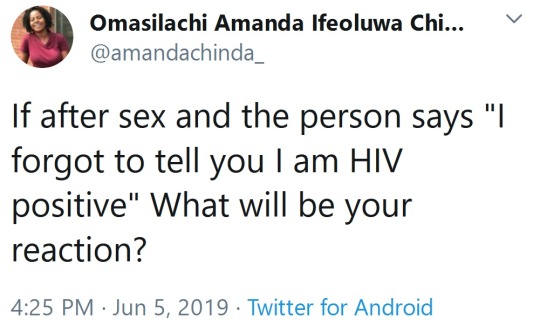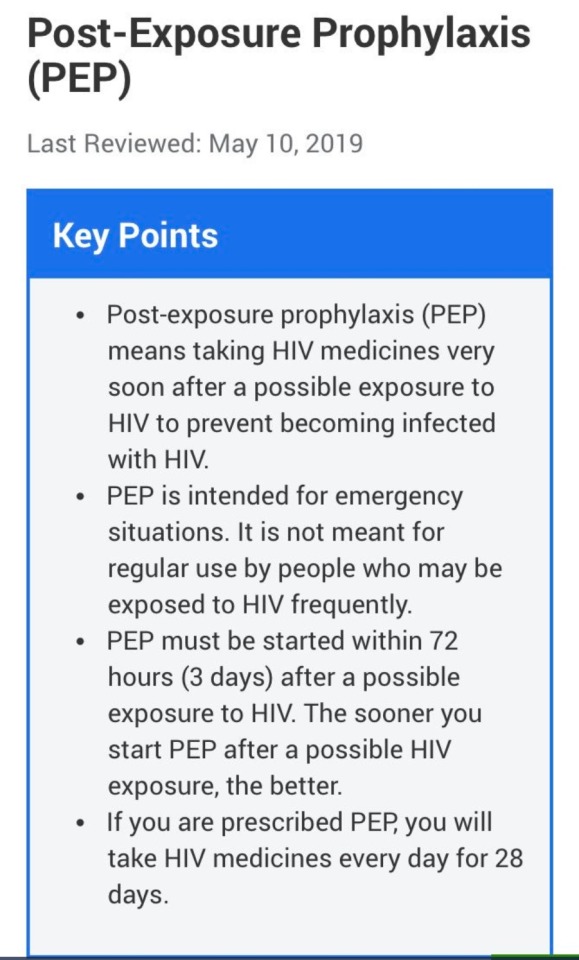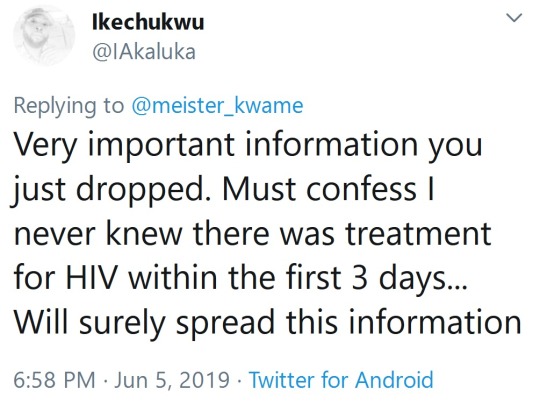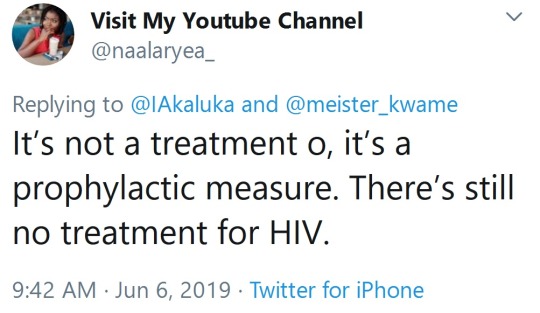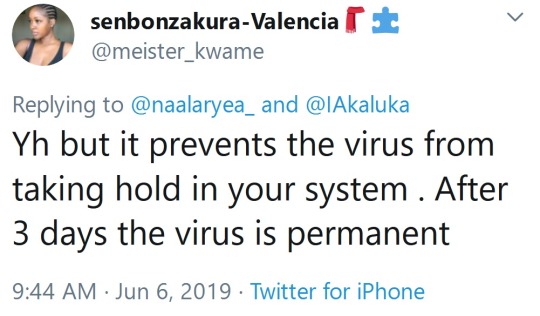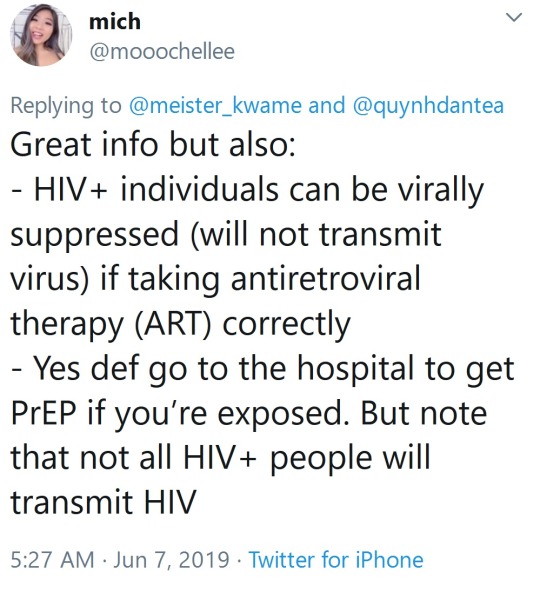This is a blog dedicated to movie, video game, youtube, etc. reviews of my own. Or just my terrible writing in general. Stay in tune for all the words that come from my brain.
Last active 60 minutes ago
Don't wanna be here? Send us removal request.
Text




when i think of you by pouthongwon
a dual sidebar theme with a lot of customization
preview / code
features: - light/dark toggle - a choice between left or right sidebar - three standard links (home, ask, archive) as well as an extra one - six custom links - sidebar icon, sidebar image and title image - a choice between three widths for posts (450px, 500px, and 540px) - a choice between three margin sizes for posts (small, medium, and large) - a choice between four extra sidebar sizes (290px, 310px, 330px, and 350px) - a choice between three font sizes (0.9rem, 1rem, and 1.1rem) - custom title and description. if you have neither of these, they'll be replaced with your title and description - about modal with icon and header images. four statistics, along with a place to put a biography. and four customizable updates.
357 notes
·
View notes
Text





Primavera: All in One Page #01 by @pneuma-themes
Always, it's spring, and everyone's in love, and the flowers pick themselves.
Live Preview / Get the code: [Pastebin] / [Github]
Another Twitter inspired layout. This is an all-in-one page with about, blogroll, tags, and FAQ sections. The code has been heavily annotated, so please go through the code first before sending me an ask!
Important note: Your blog must have been given permission to use Javascript on pages. As of 2024, the waiting time is almost indefinite, and thus might necessitate a circumvention. You can refer to the post I linked to find the how-to.
For the blogroll to display the list of blogs you follow, you must enable this option on the blog setting:

This will not work on secondary blogs, as they do not have that option on their settings.
Features:
Five custom links
Everything is customizable, from the icons to the content and the colors. Customizable options can be found on the :root section of the CSS.
A built-in light-on/off mode that can be toggled by one click.
A header image. The size of your header image is 60% of your screen width x. 250px. The image should resize automatically.
An endless space for practically every section. You can be as detailed or as concise as you like.
Sticky navigation tabs.
A short "currently" tab in the about section, can be about anything you like.
This is a page theme, so blog posts will not be displayed. Please install this through the Add new page link instead.
Credits:
Icons: @alydae
Header: @tofuvi
Fonts: Merriweather, Albert Sans @ bunny.net
Font icons: Dencar Icons (ported by @glenthemes)
CSS tabs: bulma.css, functionality adapted from this StackOverflow post.
Tooltips: tippy.js
Please like and reblog if you like or are using this!
501 notes
·
View notes
Text
Midnight in a Perfect World (5)
Author: @deadbranch Pairing: werewolf!Alex Keller x fem!Reader Summary: You find out that Alex has kept some important information from you. It breaks your heart, but you have a choice to make. Word Count: 2k Warnings: 18+ MDNI, smut later on, suggestive language, light angst, emotional turmoil, possible heartbreak, emotional goodbyes, impolite language. A/N: I won’t apologize. I promise you I took the chapter harder than you will.
SERIES MASTERLIST

MIDNIGHT IN A PERFECT WORLD (5)
You wake to your alarm while it’s still dark outside.
It’s Friday. You’ve got a full duty schedule before you can begin your weekend.
The empty bed doesn’t surprise you. His vehicle is no longer out front, but he left you a text at 0300.
[See you tonight]
Replaying the night’s events in your head, you marvel that neither of you initiated sex. If he’d tried, you would have whole-heartedly agreed to it. You barely know each other, but it’s somehow different with him. It feels different.
Given enough time, you can’t imagine how comfortable and close you’ll be. You hope very close. You’ve no time to pleasure yourself this morning.
Sighing, you consider texting back, but you’re already running late. One of the drawbacks to living way out here is that it takes longer to drive in to post during rush hour and takes almost twice as long to drive home. Depending on where Alex’s on-post housing is, you may have to spend some time there after duty hours, just to burn rush hour with something more pleasurable.
“Can’t sell this place quick enough,” you mutter as you dash toward your car.

Going into the stacks is the worst.
There’s a mezzanine level to Birmingham Hall used specifically for record retention. It’s referred to as the stacks. For all intents and purposes, it’s a dumping ground for the many documents DoD won’t permit Brigade to destroy.
The room smells of old toner and dry rot. Most storage boxes are covered in a layer of dust. You’d heard rumors that the walls are still filled with asbestos.
Someone like you would visit the stacks for one of two reasons: a CoC document retrieval order, or for non-destructive disposition of yet more documents. The latter is preferrable. The former is insufferable.
Thankfully, you’re here for document retrieval. If only you could find the correct box.
So many boxes…
A curse word escapes your lips when you spot the one you need.
It’s six shelves up, close to the ceiling. Even with the stepstool, it’s too high to pull safely. You decide you’ll have to pull the box out, move out of the way, and let it smash on the ground. Better to need a new cardboard box than let it fall on you.
“Hey.”
You almost lose your footing on the step stool.
Fuck.
It’s McIntyre.
“Sergeant. Do you need something?”
You climb down from the stepstool and smooth the front of your BDUs.
He’s standing between you and the door. Incidentally, you notice the top of his head would almost touch the doorframe if he were on his toes, not even a little.
Jesus.
His nostrils flare subtly. If you didn’t know he was a werewolf, you likely wouldn’t have noticed it.
“No ma’am. But…” McIntyre takes three steps toward you. “…I bet you’re in need of something.”
You stand your ground. “You’ve got nothing I want,” you say with as much neutral calm as you can manage.
“Hey hey…easy. Nothing like that. Just some info you may want.”
Taking a seat on a double stack of storage boxes, he inclines his head toward you, chin down as he smiles. You remain standing as you wait for him to say whatever it is he wants to say.
“You know what? Fuck this. I’ll move over there.” He points toward the southeast corner of the room. “So, if you feel the need to bolt, I’m not in your fuckin’ way. Sound better?”
He huffs out a laugh as you narrow your eyes but otherwise decline to respond.
“I’m sure you know who I am—what I am—by now.” Placing both hands on his knees, he stands with a tired intention that makes you imagine his bones creaking. His movements speak of weariness that matches the puffiness beneath his eyes. When he speaks again, he’s in the southeast corner of the room, as promised.
“Ma’am?”
“Sergeant?”
“Would you be so kind as to shut the door? What I’m about to say doesn’t concern anyone else. Just you.”
You could leave. But you don’t. Instead, you shut the door, but let your hand remain on the knob, fingers curling around the decades-old brass as he clears his throat across the room, his eyes locked on yours through the gaps in storage boxes and punched metal frame shelving.
“So. Keller, huh? Interesting choice.” He smirks before clarifying, “On your part, not his. I can see why he likes you so much.”
If you clench your jaw any harder, your molars might crack. You take a breath.
“Make your point.”
“You can stop this courtship at any time, you know.”
“Oh yeah?”
“Yeah. Bet he didn’t tell you that.”
He smiles as he waits for you to react. When you don’t, a shrug haunts his shoulders as he adjusts his seating in the corner. He continues with that smug look on his face.
“You can arrange so that none of us can court you. We’ll leave you alone. Bet he didn’t tell you that either.”
“That all?”
“Yeah. Ask Kirky-P. She’ll tell you what Keller should’ve.”
McIntyre stands up, brushing the palms of his hands against his fatigues. He shuffles to the end of the row of shelves to use the stepstool. As he reaches up, you realize he’s grabbing the box you had your eye on. He sets it on the ground and walks toward you. You give him room to pass as he makes sure not to make contact, even a brush of a sleeve.
He turns at the doorway, his head almost touching the frame again. Big boy, if ever there was one.
“Hope you find what you’re looking for.”
You stare back at him with a muddle of mixed feelings, but mostly an emotional exhaustion that only extends your silence. You can think of nothing to say, at least nothing that would add to the moment without revealing the new fragility in your voice.
“Talking about the files, of course. But…that too. See you around.”

“He’s right.”
Rai Kirkpatrick folds her arms across her chest as she lets you wrestle with how to respond.
“How?”
“How is he right, or how do you go about removing yourself from the werewolf meat market?”
“The…second one.”
“You sure you wanna do that? I mean, you and Keller look like you’re…”
“Just tell me. Please.”
She nods her head once and begins an explanation that takes about ten minutes.
All werewolves in the U.S. are required to be documented in the national registry. Although encouraged to, none are required to take a mate nor to stay mated if they don’t want to be. There’s some paperwork involved, but it’s simple and only needs to be filed once, no expiration.
Abstainers opt out of bloodline and legacy brackets by certifying a reason for non-participation. In sum, any given werewolf can permanently waive themselves from the matchmaking efforts of the governing construct, unless they recant their waiver, which they can do at any time.
Kirkpatrick uses a lot of terms you’re not familiar with, but you understand enough to feel your heart race with the rush of information and newfound agency you were previously denied.
“But I’m not a werewolf. Can humans file an opt-out waiver to exempt them from…all of this? I didn't ask for any of it.”
Your heart sinks as you say it. A big, angry part of you feels hurt. You don’t know each other that well, but he kept this from you. The obvious way out. He led you to believe staying close to him was your only option.
“Shit.” Kirkpatrick covers her face with both hands for a moment. When her hands drop, she looks wearier than she did a moment ago.
“Talk to Keller. Give him a chance to make this right, to tell you everything. Tell him that if he doesn’t come clean, then you’ll come straight to me for the information. It’s better if he’s the one to do it.”
For the first time since you met Alex, you feel despair. It’s a hollow, drifting feeling, like looming nausea in the pit of your stomach.
At least things didn’t get very far between you. You hadn’t even kissed.
The more you think about it the more absurd it all seems. You felt so close, but for no other reason than you were seeking comfort in each other in some strange, wolfishly chaste way. If that’s a thing.
This hurts, but you’ll get over it. Maybe as early as tomorrow you can start forgetting this ever happened.
Planning to file the opt-out waiver on Monday, you’ll apply for a permanent change of post immediately after. That gives you at least one or two months to get the farm sold before your transfer.
You’re hoping it’s as far away from all of this as you can possibly manage.
Someplace with no wolves.

Alex stops short when he sees the expression on your face and the stiffness in your body language.
For once he doesn’t rely on how you smell to know something’s wrong.
You take a seat on the porch, as cold and blustery as it is today. You want this to be quick. No false impressions that he can talk his way out of this. He can’t obfuscate and avoid answering your questions anymore. There’s no snuggle time after either.
Once you’ve had your discussion, he can get right back into his vehicle and leave.
If he had a tail at this moment, you’re sure it would be tucked between his legs as he shoves his hands in his jean pockets. You wish he hadn’t worn a tank top today, but looking good won’t save the situation. You’re not sure what ever could.
You met this man a week ago, and it changed your life forever. It’s up to you to change it back, the best you can.
“So you know. Don’t you?”
“Yeah. Rai explained it. Not all of it. She said it would be best if it came from you, but I disagree. You can leave. Now. I’ll reconvene with her Monday to fill in the rest.”
The alarm on his face doesn’t reach his voice. Somehow, he manages to speak with a calm softness that contrasts with the pounding pulse in his neck and the strain in his expression.
“I’m sorry. I’ve no excuse. I had reasons, but they’re selfish. Inexcusable.”
“Thank you for that. Now go. Please.” You brush off the seat of your jeans as you stand to go back in the house.
“I…”
“Go." Not bothering to turn around, you say it loud enough that it can't be mistaken for anything else. You don’t want to be cruel, but he made his choices.
“I thought about you, all day. I took one of your shirts this morning…I’ll…mail it back to you.”
He clears his throat as he takes two steps backward.
“I smelled like you all day. Had trouble focusing.”
Another two steps.
“Couldn’t wait to see you. I’m glad I got to.”
He takes the final two steps and slips his fingers under the door handle.
“Take care. Make sure you get the forms submitted first thing on Monday. Others will come calling. You might have peace for the weekend, but once they figure out we’re not…yeah.”
In lieu of saying goodbye, he raises his hand in farewell before shutting the door.
“Fuck,” you mutter.
You wonder how much of this is your own weakness and how much is that you thought about him all day too. Before the stacks. Although you couldn’t smell it yourself, you happily knew that his scent was all over you. You had trouble focusing and couldn’t wait to see him.
It broke your heart when you found out what he’d been hiding from you.
When you lift your gaze, he’s looking right back, engine turned, but still in park.
Moments later, you find yourself leaning against his door, window rolled down, with his lips on yours, hands clasping either side of your neck as a tear slips down his cheek.

Next Chapter [coming soon]

@smoggyfogbottom @athronebelow @argella1300 @jynxmirage @glitterypirateduck @sofasoap @lollycotton @writeforfandoms @tiredmetalenthusiast @miyabilicious @homicidal-slvt @tapioca-marzipan @chocolatestrawberry-poptart @gogh-with-the-flow @vide0-nasties @clownfishenthusiast @macravishedbymactavish @kiki-is-hyperfixating @rileyslibrarian @luciferstempest @quincessimus @luminousbeings-crudematter @oleworldblues @shadesofreyes @crunchlite @cathnoneofyourbusiness @b-lovedobserver @efingart @astraluminaaa @clear-your-mind-and-dream @kneelingshadowsalome @ramadiiiisme @bubuslutty @johfaam0 @tallrock35
303 notes
·
View notes
Text
Right Where it Belongs (Series Masterlist)
A Call of Duty Fandom AU (ongoing series)
Pairing: Simon "Ghost" Riley x fem!Reader

18+, Minors Do Not Interact
Series Summary: One hell of a bad day ends with you and Ghost stranded on a deserted tropical island. It wouldn't be so bad if you didn't already hate each other's guts. Eventually you work out your differences and comfort each other, lighting signal fires every night in hopes of being rescued. By the end of your time together, you can't imagine your life without Simon Riley.
Series Warnings: 18+ MDNI, unprotected p in v sex, manual stimulation of genitals (m & f), oral sex (m & f receiving), suggestive language, fluff, flirting, angst, whump, mention of blood, canon-typical violence, references to death and dead soldiers, pregnancy, impolite language, reader is cishet female, more warnings to be added as chapters are published.
*= Suggestive content
** = 18+ MDNI content
*** = Filthy smut, turn back while you still can
Only published chapters have been rated.
Chapters in purple font are active WIP.
MASTERLIST (All @deadbranch Fanfic Content)

PART ONE NEW 08-18-23
Through a series of ill-fated events, you’re stuck in the middle of nowhere with your least favorite person, Ghost.
PART TWO [coming soon]
Summary pending
PART THREE
Summary pending
PART FOUR
Summary pending
PART FIVE
Summary pending
885 notes
·
View notes
Text
"And I think that’s a fucking shame, Bob"
6K notes
·
View notes
Text
"And I think that’s a fucking shame, Bob"
6K notes
·
View notes
Text
Plotting Methods for Meticulous Plotters
A Guide for the Seasoned and the Not-So-Plot Savvy
This is a subject that a lot of writers tend to struggle with. They have ideas, great ideas, but are uncertain how to string them together into a solid plot. There are many methods that have been devised to do so, and most seem to be based on something you might remember:
The 5 Point Method
This is your basic plot diagram:

Exposition – This is the beginning of your story. This is where you introduce your character (s), establish a setting, and also present your main conflict.
Rising Action – Your story now begins to build. There are often multiple key events that occur where your main character may be faced with a new problem he has to solve or an unexpected event is thrust at him.
Climax – Everything you’ve been writing has been leading up to this moment. This is going to be the most exciting part of your story where your main character faces the main conflict and overcomes it.
Falling Action – This is mostly tying up loose ends after your main conflict is resolved. They are minor things that weren’t nearly as important as the main conflict, but still needed to be dealt with.
Resolution –The end of the story.
This is probably the easiest way to remember how to string together a single (or multiple) plots. It may be easier for some to define the main plot as the central conflict, or the thing that’s causing your main character a huge problem/is his goal.
The 8 Point Method
This method is used to write both novels and film scripts, and further breaks down the 5 Point Method. From the book Write a Novel and Get It Published: A Teach Yourself Guide by Nigel Watts:
Stasis – The opening where the story takes place. Here you introduce your main character and establish a setting (Watts defines it as an “everyday” setting, something normal, but it can be whatever you want).
Trigger or Inciting Incident – The event that changes your character’s life an propels your story forward. This is where you introduce the main conflict.
The Quest – The result of the event. What does your character do? How does he react?
Surprise – This section takes of the middle of the story and involves all of the little setbacks and unexpected events that occur to the main character as he tries to fix the problems he’s faced with and/or achieve his goal. This is where you as an author get to throw complication, both horrible and wonderful, at your protagonist and see what happens.
Critical Choice –At some point your character is going to be faced with making a decision that’s not only going to test him as individual, but reveal who he truly is to the audience. This cannot be something that happens by chance. The character must make a choice.
Climax – This is the result of the main character’s critical choice, and should be the highest point of tension in the story.
Reversal – The consequence of the choice and climax that changes the status of your protagonist, whatever that may be. It could make him a king, a murderer, or whatever else you like but it has to make sense with the rest of the story.
Resolution – The end of the story where loose ends are tied up. You’re allowed to leave things unresolved if you intend to write a sequel, but the story itself should be stand alone.
Three Act Structure
While this method is usually for screenplays, it is also used in writing novels (for instance The Hunger Games novels are split up into three acts). From the The Screen Writer’s Workbook by Syd Field: Acts 1 and 3 should be about the same length while Act 2 should be double. For instance if you were writing a screenplay for a two hour film Acts 1 and 3 would be 30 minutes each while Act 2 would be 60 minutes.
Act 1, Set Up – This contains the inciting incident and a major plot point towards the end. The plot point here leads into the second act and is when the protagonist decides to take on the problem he’s faced with.
Act 2, Confrontation – This contains the midpoint of the story, all of the little things that go wrong for the protagonist, and a major plot point towards the end that propels the story into the third act. This is the critical choice the character must make.
Act 3, Resolution – This is where the climax occurs as well as the events that tie up the end of the story.
Another way to look at this method is that there are actually three major plot points, or disasters, that move the plot forward. The first is at the end of Act 1, the second is in the middle of Act 2, and the third is at the end of Act 2.
The Snowflake Method
A “top-down” method by Randy Ingermanson that breaks novel writing down into basic parts, building upon each one. You can find his page on the method here. His ten steps:
Write a single sentence to summarize your novel.
Write a paragraph that expands upon that sentence, including the story set up, the major conflicts, and the ending.
Define your major characters and write a summary sheet corresponding to each one that includes: the character’s name, their story arc, their motivation and goal, their conflict, and their epiphany (what they will learn).
Expand each sentence of your summary paragraph in Step 2 into its own paragraph.
Write a one page description of your major characters and a half page description of less important characters.
Expand each paragraph in Step 4 into a page each.
Expand each character description into full-fledged character charts telling everything there is to know about the characters.
Make a spreadsheet of all of the scenes you want to include in the novel.
Begin writing the narrative description of the story, taking each line from the spreadsheet and expanding the scenes with more details.
Begin writing your first draft.
Wing It
This is what I do. I tend to keep in mind the basic structure of the 5 Point Method and just roll with whatever ideas come my way. I’ve never been a fan of outlines, or any other type of organization. According to George R.R. Martin, I’ve always been a gardener, not an architect when it comes to writing. I don’t plan, I just come up with ideas and let them grow. Of course, this may not work for some of you, so here are some methods of organization:
Outlines
Notecards
Spreadsheets
Lists
Character Sheets
And if all else fails, you can fall on the advice of the great Chuck Wendig: 25 Ways to Plot and Prep Your Story.
Remember, none of the methods above are set in stone. They are only guidelines to help you finally write that novel.
-Morgan
12K notes
·
View notes
Photo
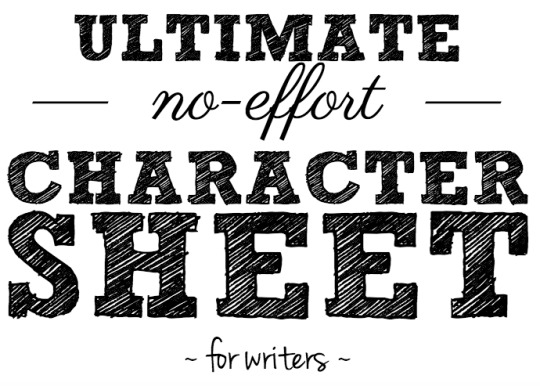

I’m a very lazy person. I know my characters well, but every time I try to fill out a proper character sheet, I either get distracted or simply never finish them.
SO!
I made this! A silly, simple character sheet in which you only have to check boxes to get to know your dear puppet character. Use to your heart’s content, and if you’re going to repost, please credit! Enjoy~
PDF/Printable version on Google Drive
60K notes
·
View notes
Photo
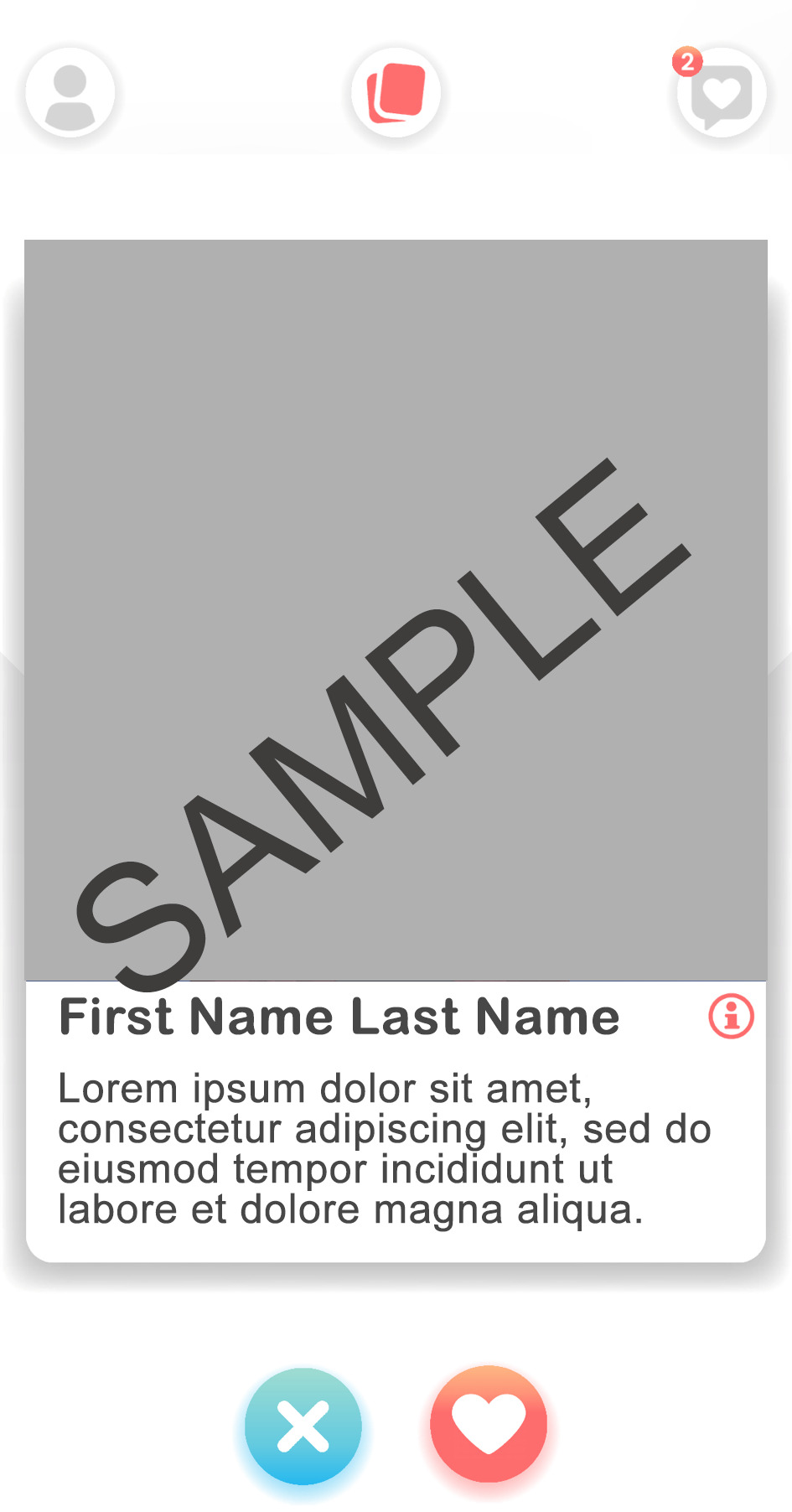



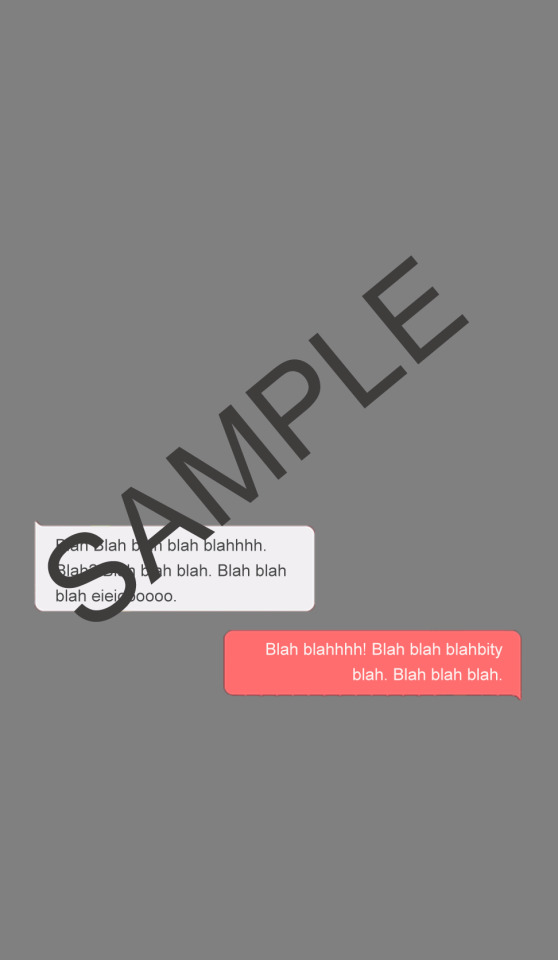
so i made a lovelink oc template!!
this is the first template i’ve ever made so don’t hesitate at all to let me know if smthg doesnt make sense or i messed up smthg or etc.
things you need beforehand:
like most template posts say, a general knowledge of photoshop things.
nothing else! thats literally it. i didnt include any custom fonts required to download or anything like that. you can use them if you want, but default ps fonts, styles, and etc. work with this just fine :)
things to know:
SWIPE PROFILE:
for the swipe profile (the first pic), the profile pic needs to be w: 12.319in x h: 12.278in (or w 887px by h 884px). so you can choose an image of any size, just edit it in ps to be those measurements.
all the pfp sizes in the other sections, you can already find out in ps by checking the ellipse tool
CHAT PREVIEWS:
the green & grey notification icons are MOVEABLE, meaning you can use the move tool to rearrange them so that they’re in a different order if you want.
this also gives you the ability to create more icons (i.e. if you want 2 grey icons instead of 2 green ones you can just duplicate it or etc).
the numbers on top of the gallery icons are NOT changeable, sorry. this goes for all the other gallery icons in the other sections too.
CG CONVO:
the dialogue boxes for this section are EDITABLE. so you dont even have to use the background space i put and can insert and edit them onto any photo you want.
and that’s it! im very proud of this and if you want, you could even @ me in the ocs you post because i’d love to see them! (you don’t have to @ me if you dont want too im totally fine with either). so, hope you enjoy! :)
[DOWNLOAD]
here’s a link to my own oc so you can see how it looks filled out, and can ofc use the mc description template i added underneath it
104 notes
·
View notes
Text

Writing with Color: Description Guide - Words for Skin Tone
We discussed the issues describing People of Color by means of food in Part I of this guide, which brought rise to even more questions, mostly along the lines of “So, if food’s not an option, what can I use?” Well, I was just getting to that!
This final portion focuses on describing skin tone, with photo and passage examples provided throughout. I hope to cover everything from the use of straight-forward description to the more creatively-inclined, keeping in mind the questions we’ve received on this topic.
So let’s get to it.
S T A N D A R D D E S C R I P T I O N
B a s i c C o l o r s

Pictured above: Black, Brown, Beige, White, Pink.
“She had brown skin.”
This is a perfectly fine description that, while not providing the most detail, works well and will never become cliché.
Describing characters’ skin as simply brown or beige works on its own, though it’s not particularly telling just from the range in brown alone.
C o m p l e x C o l o r s
These are more rarely used words that actually “mean” their color. Some of these have multiple meanings, so you’ll want to look into those to determine what other associations a word might have.

Pictured above: Umber, Sepia, Ochre, Russet, Terra-cotta, Gold, Tawny, Taupe, Khaki, Fawn.
Complex colors work well alone, though often pair well with a basic color in regards to narrowing down shade/tone.
For example: Golden brown, russet brown, tawny beige…
As some of these are on the “rare” side, sliding in a definition of the word within the sentence itself may help readers who are unfamiliar with the term visualize the color without seeking a dictionary.
“He was tall and slim, his skin a russet, reddish-brown.”
Comparisons to familiar colors or visuals are also helpful:
“His skin was an ochre color, much like the mellow-brown light that bathed the forest.”
M o d i f i e r s
Modifiers, often adjectives, make partial changes to a word.The following words are descriptors in reference to skin tone.
D a r k - D e e p - R i c h - C o o l
W a r m - M e d i u m - T a n
F a i r - L i g h t - P a l e
Rich Black, Dark brown, Warm beige, Pale pink…
If you’re looking to get more specific than “brown,” modifiers narrow down shade further.
Keep in mind that these modifiers are not exactly colors.
As an already brown-skinned person, I get tan from a lot of sun and resultingly become a darker, deeper brown. I turn a pale, more yellow-brown in the winter.
While best used in combination with a color, I suppose words like “tan” “fair” and “light” do work alone; just note that tan is less likely to be taken for “naturally tan” and much more likely a tanned White person.
Calling someone “dark” as description on its own is offensive to some and also ambiguous. (See: Describing Skin as Dark)
U n d e r t o n e s
Undertones are the colors beneath the skin, seeing as skin isn’t just one even color but has more subdued tones within the dominating palette.

Mentioning the undertones within a character’s skin is an even more precise way to denote skin tone.
As shown, there’s a difference between say, brown skin with warm orange-red undertones (Kelly Rowland) and brown skin with cool, jewel undertones (Rutina Wesley).
“A dazzling smile revealed the bronze glow at her cheeks.”
“He always looked as if he’d ran a mile, a constant tinge of pink under his tawny skin.”
Standard Description Passage
“Farah’s skin, always fawn, had burned and freckled under the summer’s sun. Even at the cusp of autumn, an uneven tan clung to her skin like burrs. So unlike the smooth, red-brown ochre of her mother, which the sun had richened to a blessing.”
-From my story “Where Summer Ends” featured in Strange Little Girls
Here the state of skin also gives insight on character.
Note my use of “fawn” in regards to multiple meaning and association. While fawn is a color, it’s also a small, timid deer, which describes this very traumatized character of mine perfectly.
Though I use standard descriptions of skin tone more in my writing, at the same time I’m no stranger to creative descriptions, and do enjoy the occasional artsy detail of a character.
C R E A T I V E D E S C R I P T I O N
Whether compared to night-cast rivers or day’s first light…I actually enjoy seeing Characters of Colors dressed in artful detail.
I’ve read loads of descriptions in my day of white characters and their “smooth rose-tinged ivory skin”, while the PoC, if there, are reduced to something from a candy bowl or a Starbucks drink, so to actually read of PoC described in lavish detail can be somewhat of a treat.
Still, be mindful when you get creative with your character descriptions. Too many frills can become purple-prose-like, so do what feels right for your writing when and where. Not every character or scene warrants a creative description, either. Especially if they’re not even a secondary character.
Using a combination of color descriptions from standard to creative is probably a better method than straight creative. But again, do what’s good for your tale.
N A T U R AL S E T T I N G S - S K Y

Pictured above: Harvest Moon -Twilight, Fall/Autumn Leaves, Clay, Desert/Sahara, Sunlight - Sunrise - Sunset - Afterglow - Dawn- Day- Daybreak, Field - Prairie - Wheat, Mountain/Cliff, Beach/Sand/Straw/Hay.
Now before you run off to compare your heroine’s skin to the harvest moon or a cliff side, think about the associations to your words.
When I think cliff, I think of jagged, perilous, rough. I hear sand and picture grainy, yet smooth. Calm. mellow.
So consider your character and what you see fit to compare them to.
Also consider whose perspective you’re describing them from. Someone describing a person they revere or admire may have a more pleasant, loftier description than someone who can’t stand the person.
“Her face was like the fire-gold glow of dawn, lifting my gaze, drawing me in.”
“She had a sandy complexion, smooth and tawny.”
Even creative descriptions tend to draw help from your standard words.
F L O W E R S
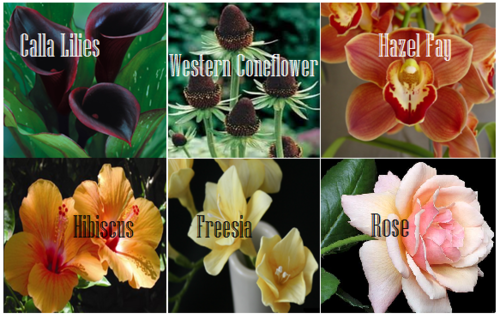
Pictured above: Calla lilies, Western Coneflower, Hazel Fay, Hibiscus, Freesia, Rose
It was a bit difficult to find flowers to my liking that didn’t have a 20 character name or wasn’t called something like “chocolate silk” so these are the finalists.
You’ll definitely want to avoid purple-prose here.
Also be aware of flowers that most might’ve never heard of. Roses are easy, as most know the look and coloring(s) of this plant. But Western coneflowers? Calla lilies? Maybe not so much.
“He entered the cottage in a huff, cheeks a blushing brown like the flowers Nana planted right under my window. Hazel Fay she called them, was it?”
A S S O R T E D P L A N T S & N A T U R E

Pictured above: Cattails, Seashell, Driftwood, Pinecone, Acorn, Amber
These ones are kinda odd. Perhaps because I’ve never seen these in comparison to skin tone, With the exception of amber.
At least they’re common enough that most may have an idea what you’re talking about at the mention of “pinecone."
I suggest reading out your sentences aloud to get a better feel of how it’ll sounds.
"Auburn hair swept past pointed ears, set around a face like an acorn both in shape and shade.”
I pictured some tree-dwelling being or person from a fantasy world in this example, which makes the comparison more appropriate.
I don’t suggest using a comparison just “cuz you can” but actually being thoughtful about what you’re comparing your character to and how it applies to your character and/or setting.
W O O D

Pictured above: Mahogany, Walnut, Chestnut, Golden Oak, Ash
Wood can be an iffy description for skin tone. Not only due to several of them having “foody” terminology within their names, but again, associations.
Some people would prefer not to compare/be compared to wood at all, so get opinions, try it aloud, and make sure it’s appropriate to the character if you do use it.
“The old warlock’s skin was a deep shade of mahogany, his stare serious and firm as it held mine.”
M E T A L S

Pictured above: Platinum, Copper, Brass, Gold, Bronze
Copper skin, brass-colored skin, golden skin…
I’ve even heard variations of these used before by comparison to an object of the same properties/coloring, such as penny for copper.
These also work well with modifiers.
“The dress of fine white silks popped against the deep bronze of her skin.”
G E M S T O N E S - M I N E R A LS

Pictured above: Onyx, Obsidian, Sard, Topaz, Carnelian, Smoky Quartz, Rutile, Pyrite, Citrine, Gypsum
These are trickier to use. As with some complex colors, the writer will have to get us to understand what most of these look like.
If you use these, or any more rare description, consider if it actually “fits” the book or scene.
Even if you’re able to get us to picture what “rutile” looks like, why are you using this description as opposed to something else? Have that answer for yourself.
“His skin reminded her of the topaz ring her father wore at his finger, a gleaming stone of brown, mellow facades.”
P H Y S I C A L D E S C R I P T I ON
Physical character description can be more than skin tone.
Show us hair, eyes, noses, mouth, hands…body posture, body shape, skin texture… though not necessarily all of those nor at once.
Describing features also helps indicate race, especially if your character has some traits common within the race they are, such as afro hair to a Black character.
How comprehensive you decide to get is up to you. I wouldn’t overdo it and get specific to every mole and birthmark. Noting defining characteristics is good, though, like slightly spaced front teeth, curls that stay flopping in their face, hands freckled with sunspots…
G E N E R A L T I P S
Indicate Race Early: I suggest indicators of race be made at the earliest convenience within the writing, with more hints threaded throughout here and there.
Get Creative On Your Own: Obviously, I couldn’t cover every proper color or comparison in which has been “approved” to use for your characters’ skin color, so it’s up to you to use discretion when seeking other ways and shades to describe skin tone.
Skin Color May Not Be Enough: Describing skin tone isn’t always enough to indicate someone’s ethnicity. As timeless cases with readers equating brown to “dark white” or something, more indicators of race may be needed.
Describe White characters and PoC Alike: You should describe the race and/or skin tone of your white characters just as you do your Characters of Color. If you don’t, you risk implying that White is the default human being and PoC are the “Other”).
PSA: Don’t use “Colored.” Based on some asks we’ve received using this word, I’d like to say that unless you or your character is a racist grandmama from the 1960s, do not call People of Color “colored” please.
Not Sure Where to Start? You really can’t go wrong using basic colors for your skin descriptions. It’s actually what many people prefer and works best for most writing. Personally, I tend to describe my characters using a combo of basic colors + modifiers, with mentions of undertones at times. I do like to veer into more creative descriptions on occasion.
Want some alternatives to “skin” or “skin color”? Try: Appearance, blend, blush, cast, coloring, complexion, flush, glow, hue, overtone, palette, pigmentation, rinse, shade, sheen, spectrum, tinge, tint, tone, undertone, value, wash.
Skin Tone Resources
List of Color Names
The Color Thesaurus
Things that are Brown (blog)
Skin Undertone & Color Matching
Tips and Words on Describing Skin
Photos: Undertones Described (Modifiers included)
Online Thesaurus (try colors, such as “red” & “brown”)
Don’t Call me Pastries: Creative Skin Tones w/ pics 3 2 1
Writing & Description Guides
WWC Featured Description Posts
WWC Guide: Words to Describe Hair
Writing with Color: Description & Skin Color Tags
7 Offensive Mistakes Well-intentioned Writers Make
I tried to be as comprehensive as possible with this guide, but if you have a question regarding describing skin color that hasn’t been answered within part I or II of this guide, or have more questions after reading this post, feel free to ask!
~ Mod Colette
170K notes
·
View notes
Text

Skin.
Writing with Color has received several asks on this topic.
Everything from “how do I describe my character’s skin tone without being offensive?” and “what’s the problem with comparing my character to chocolate and coffee?”
I’m hoping to address all these and likewise questions in this guide on describing POCs’ skin color, from light, dark and all that’s in between.
The Food Thing: So what’s the big deal?
So exactly what is the problem with comparing a POC’s skin tone to cocoa, coffee, caramel, brown sugar and other sweets and goods? Well, there’s several potential problems you come across when you pull out the old Hershey’s bar comparison for your dark-skinned character, even if offense is not your intention.
Keep reading
17K notes
·
View notes
Text
CHARACTER FACIAL EXPRESSIONS (WRITING REFERENCE)
EYES/BROWS
his eyes widened
her eyes went round
her eyelids drooped
his eyes narrowed
his eyes lit up
his eyes darted
he squinted
she blinked
her eyes twinkled
his eyes gleamed
her eyes sparkled
his eyes flashed
his eyes glinted
his eyes burned with…
her eyes blazed with…
her eyes sparked with…
her eyes flickered with…
_____ glowed in his eyes
the corners of his eyes crinkled
she rolled her eyes
he looked heavenward
she glanced up to the ceiling
she winked
tears filled her eyes
his eyes welled up
her eyes swam with tears
his eyes flooded with tears
her eyes were wet
his eyes glistened
tears shimmered in her eyes
tears shone in his eyes
her eyes were glossy
he was fighting back tears
tears ran down her cheeks
his eyes closed
she squeezed her eyes shut
he shut his eyes
his lashes fluttered
she batted her lashes
his brows knitted
her forehead creased
his forehead furrowed
her forehead puckered
a line appeared between her brows
his brows drew together
her brows snapped together
his eyebrows rose
she raised a brow
he lifted an eyebrow
his eyebrows waggled
she gave him a once-over
he sized her up
her eyes bored into him
she took in the sight of…
he glared
she peered
he gazed
she glanced
he stared
she scrutinized
he studied
she gaped
he observed
she surveyed
he gawked
he leered
his pupils (were) dilated
her pupils were huge
his pupils flared
NOSE
her nose crinkled
his nose wrinkled
she sneered
his nostrils flared
she stuck her nose in the air
he sniffed
she sniffled
MOUTH
she smiled
he smirked
she grinned
he simpered
she beamed
her mouth curved into a smile
the corners of his mouth turned up
the corner of her mouth quirked up
a corner of his mouth lifted
his mouth twitched
he gave a half-smile
she gave a lopsided grin
his mouth twisted
he plastered a smile on his face
she forced a smile
he faked a smile
her smile faded
his smile slipped
he pursed his lips
she pouted
his mouth snapped shut
her mouth set in a hard line
he pressed his lips together
she bit her lip
he drew his lower lip between his teeth
she nibbled on her bottom lip
he chewed on his bottom lip
his jaw set
her jaw clenched
his jaw tightened
a muscle in her jaw twitched
he ground his jaw
he snarled/his lips drew back in a snarl
her mouth fell open
his jaw dropped
her jaw went slack
he gritted his teeth
she gnashed her teeth
her lower lip trembled
his lower lip quivered
SKIN
she paled
he blanched
she went white
the color drained out of his face
his face reddened
her cheeks turned pink
his face flushed
she blushed
he turned red
she turned scarlet
he turned crimson
a flush crept up her face
WHOLE FACE, ETC.
he screwed up his face
she scrunched up her face
he grimaced
she winced
she gave him a dirty look
he frowned
she scowled
he glowered
her whole face lit up
she brightened
his face went blank
her face contorted
his face twisted
her expression closed up
his expression dulled
her expression hardened
she went poker-faced
a vein popped out in his neck
awe transformed his face
fear crossed her face
sadness clouded his features
terror overtook his face
recognition dawned on her face
SOURCE
82K notes
·
View notes
Text
For those of you who write military fics
If you have never been in, or aren’t around people who’ve been in, I would dearly love to give you a few pointers.
Let me preface this: I love it when people write military fics (be they AU or canon-fic). I love the characterizations, the story arcs you create, and the love with which you create the stories.
But I’d like to help you make the actions of military personnel as accurate as possible, so someone who’s actually in doesn’t start to read your fic and roll their eyes at some of the things you unknowingly write.
-First off, you do not salute in civilian clothes. It’s actually unauthorized. There are only two exceptions to this rule: the President is allowed to salute in civvies, and if the national anthem is playing outdoors, combat veterans are now allowed to salute. (That came about in 2010, for accurate reference.)
-Do not salute indoors, unless during a formation (but I doubt people who don’t have intimate knowledge of drill and ceremony would bother writing about a formation, so that point is mostly just thrown in for shits and giggles).
-The army and air force do not say, “sir, yes sir”. That’s a marine thing (I’m not sure about the navy, since I’m not in the navy, but I’m sure someone else could help out if there’s a question about it).
-Saying “black ops” isn’t really something we do. For the army, you’ve got SF (which is how we refer to special forces–the guys you’re probably thinking about (”green beret” is an old term for them that’s not really used anymore)) and Rangers for the two big special operations forces. SEALS are the navy force, and I apologize, but I don’t know the other branches’ special forces. Again, ask someone who’s served in that branch.
-People don’t usually refer to themselves (or others) by their ranks. Exceptions are usually made if hanging out with people from your unit speaking about a superior, such as “Yeah, LT and I were talking the other day and …”.
-Sergeants are not referred to as “sarge”. You have no idea how many people got the shit smoked out of them in basic for that error.
-Army goes through Basic Training (or Basic Combat Training now; BCT for short), and marines go through Boot Camp. Yes, there is definitely a difference in terms. Army people tend to refer to their initial training as simply “basic”. I don’t know about marines or other branches.
-Calling someone “Soldier” is really something only done on TV/film. It’s usually mocked by people who are in.
-In the army, it is against regulation to just stick your hands in your pockets. We mockingly call them “Air Force gloves”, though I don’t know if they typically put their hands in their pockets. There is also a big stigma against wearing “snivel gear”: the poly pro cold-weather protection gear worn underneath your uniform.
-The everyday Army uniforms are called ACUs (Army Combat Uniform). They are never called anything else, but especially not fatigues. If you’re going back to 2003 or earlier, the uniform was BDUs, or the Battle Dress Uniform. The tan uniforms worn during the Gulf War and first few years of Operation Iraqi Freedom (OIF) and Operation Enduring Freedom (OEF; Afghanistan) were called first chocolate chips (gulf war-era) and then DCUs (Desert Combat Uniform).
-The dress uniform is called something different depending on what time period you’re going for. Saying “dress uniform” is usually a good bet, because you’ve also got Class A’s, Class B’s, ASUs, Dress Blues, Khakis, etc.
-Typically when meeting someone else who’s in, the first things you ask are, “What’s your MOS (military occupational specialty–your job)? Where were you stationed?” Giving out rank and deployment backgrounds out of the blue don’t usually happen.
-Time spent in the military is usually referred to as simply being “in”. “How long were you in for?” is heard way more often than “how long did you serve for?” That question is usually asked by civilians.
-There are enlisted, and there are officers. Enlisted are those who start out as privates, work their way up through the NCO, or non-commissioned officer ranks: sergeant (called “buck sergeant” in a derogatory term for someone who has been freshly promoted), staff sergeant, sergeant first class, and eventually get to first sergeants and sergeants major after fifteen to thirty years in. Officers also usually start out as privates and specialists, then graduate from college and commission as second lieutenants (the derogatory term is “butter bar” and is usually used in reference to said officer’s lack of experience and knowledge) before working up to first lieutenant, captain, major, lieutenant colonel (”light colonel”), and colonel (”full bird”). The general timeline is making captain (”getting your railroad tracks”) after about 5-8 years for competent officers, and spending 5-10 years as a captain.
-We do not stand at parade rest unless forced. Ever.
-Or at attention.
-When talking to an NCO, a lower enlisted will stand at parade rest. When talking to an officer, an enlisted will stand at attention.
-The highest ranking NCO is lower ranking than the lowest ranking officer.
-If you want to throw in some humor, if there is a lower enlisted (E-4 (specialist) or below) joking with an NCO, and the lower enlisted says something, the NCO can snark back with, “I’m sorry, I didn’t hear you because you weren’t standing at the position of parade rest.” It’s a dick move usually to call people out for that, but it happens often enough that if you put that in a fic, someone who’s in will likely laugh at that for a few minutes.
-There is a term for a slacker in the army called POG (pronounced “pohg” with a long o). It stands for Personnel Other than Grunt, meaning everyone who’s not infantry. The term has transformed to mean anyone who shirks their duty or is kind of a shitbag and should be kicked out.
-There’s also a bit of a stereotype that infantry are made up of dumb guys, because you don’t need a high GT score to get that MOS. Their nomenclature for their MOS is 11B (eleven bravo), which is often referred to as an “eleven bang-bang” when trying to insult them.
-If someone is making someone else do push-ups, they do not say “drop and give me x number”. They’ll tell them either to push, or tell them to get in the front-leaning rest. The front-leaning rest position is the starting position for the push-up.
-Usually referring to basic training and AIT (advanced individual training, where you learn your military occupational specialty), you get “smoked” on a regular basis. This refers to PT (physical training), usually in the form of push-ups, flutter kicks, and sprints. It’s not fun. One of the least favorite phrases to hear in basic is, “Platoon, attention! Half-left face! Front leaning rest position, move. In cadence! Exercise!” Because that is the full command for getting people to do push-ups. There is literally no other reason for the half-left face movement. It honestly exists only for push-ups.
-It is awkward as fuck to be told “thank you for your service”. It’s wonderful that people want to show their support, but it is very difficult to respond to that without sounding like a douche.
I know I said a lot about basic training in there, but that’s because I tend to read a lot of fics that are either about basic or about deployments. I can give some pretty firm answers on basic, but everyone’s deployment is different, and I also could be violating a shit-ton of OPSEC (operation security) by telling you guys specific details about deployments. Everything I’ve told you is information you can look up on your own on the internet, but this is a bit more insider’s culture for you to help make your stuff more accurate.
And if you ever find yourself writing a military fic and have questions, by all means, inbox me. I’ve been in for almost nine years and I do have one deployment under my belt, so I can give you accurate army info. I’ve never served in any other branch, though, but I can probably give you a little bit more accurate info than what the movies do if you’ve got general questions.
Also, if you’ve got questions about PTSD, I can help with that. It’s not the cake walk that a good deal of fics portray it as, and it doesn’t always involve nightmares and aversion to touch. It can present as depression, intense anger issues, pulling away from loved ones, driving in the middle of the road, freaking out over pops, bangs, crashes and other unexpected noises, being easily startled by things other than noises, hypervigilance, the inability to sit with one’s back to the room, sudden bouts of anger, depression, tears, silence, or mood swings, among many others.
-Also, please, please, if you’re going to write about someone with a disability, or something that gave them a medical discharge, talk to me about the VA first, unless you’ve got a lot of knowledge about them. Not only am I in, but I’ve also worked professionally for the VA, some of that time in enrollment and eligibility, so I know a lot about disability pensions, who would qualify, what type of benefits they would qualify for, etc. I also know the ways that people can accidentally get screwed over from the VA. (It’s actually one of my long-term professional goals to change some of those things, so I am very passionate and very knowledgeable about it.)
TL;DR: I know shit about the military and the VA. Ask me if you have accuracy questions.
32K notes
·
View notes
Text
Color Synonyms
White
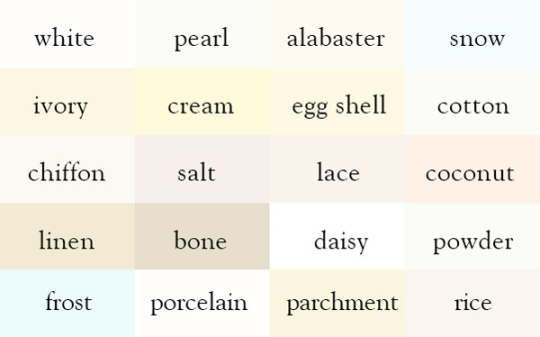
also: pale; blanched; sallow; pallid; waxen; spectral; translucent; albino;
Grey
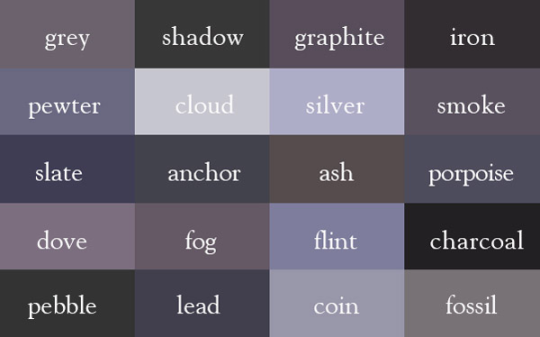
also: dust; stone; pepper;
Black

also: coal; slate; dusky; ebon; shadow; murky;
Tan
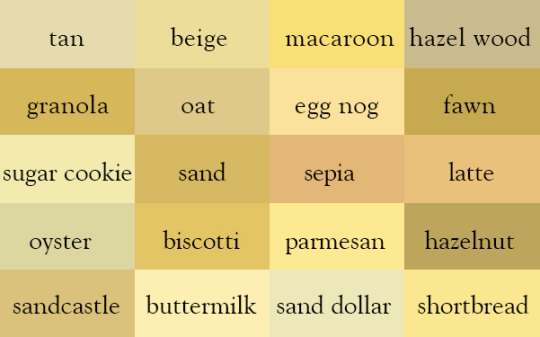
also: flesh; khaki; cream; tawny;
Brown
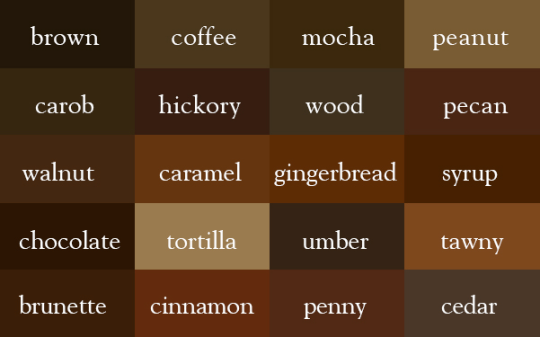
also: henna; russet; sepia; chestnut; cocoa; drab; bronze;
Red
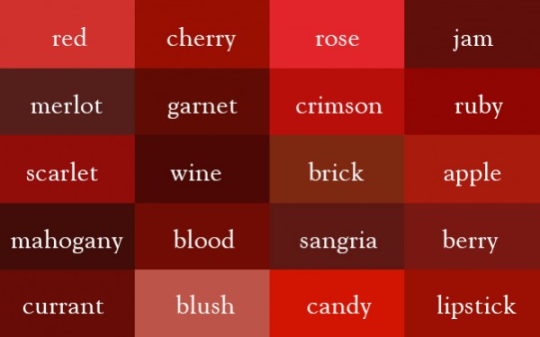
also: terracotta ; rouge; carmine; fire-engine; ruddy
Orange
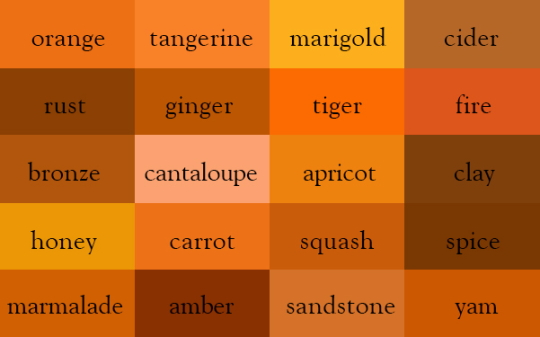
also: pumpkin ; rust ;
Yellow

also: sunny; amber; saffron; hay; straw; platinum;
Green
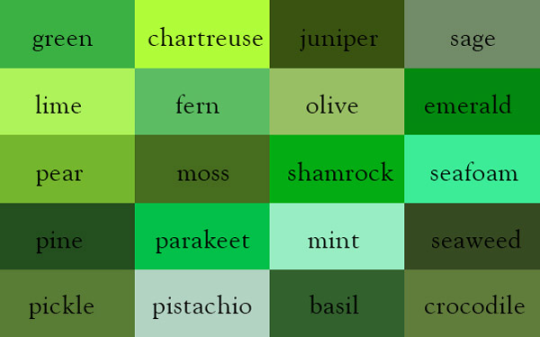
also: viridescent; grass; jade; forest;
Blue
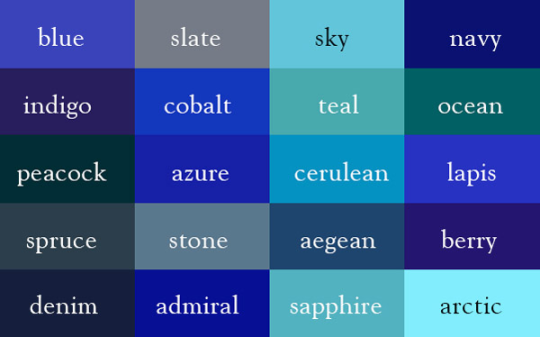
also: turquoise; cyan; ultramarine; royal; aqua; aquamarine;
Purple
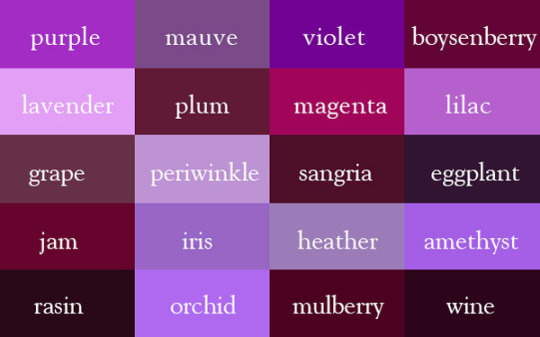
also: berry; amaranthine;
Pink

also: flushed; candy; cherry blossom; petal pink ;
—– source: http://ingridsundberg.com/
—–additional synonyms added by me
241K notes
·
View notes
Photo
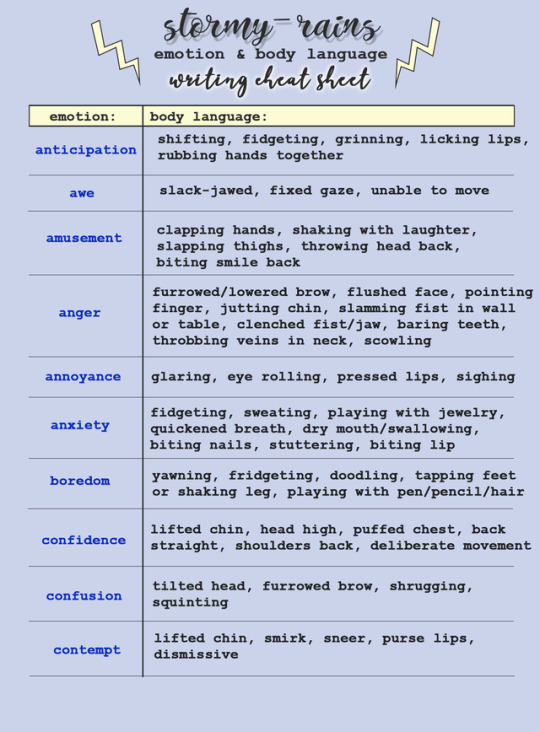
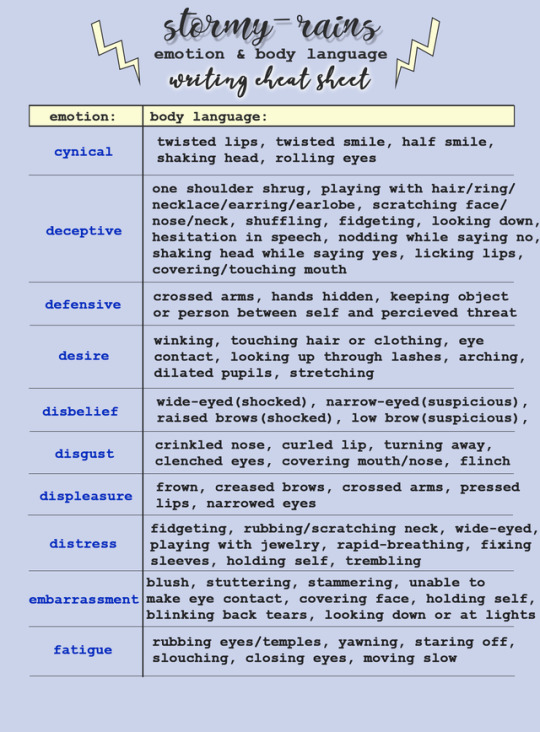
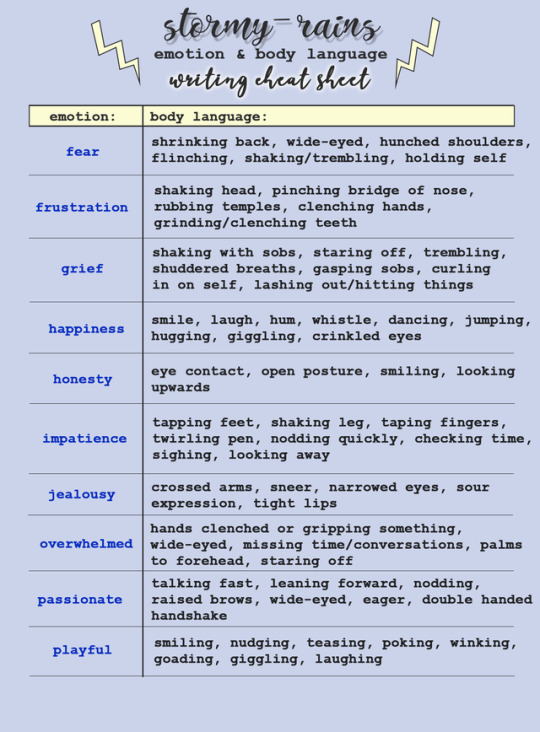

A Writing Cheat Sheet: for linking actions with emotions.
As always, click for HD.
53K notes
·
View notes

